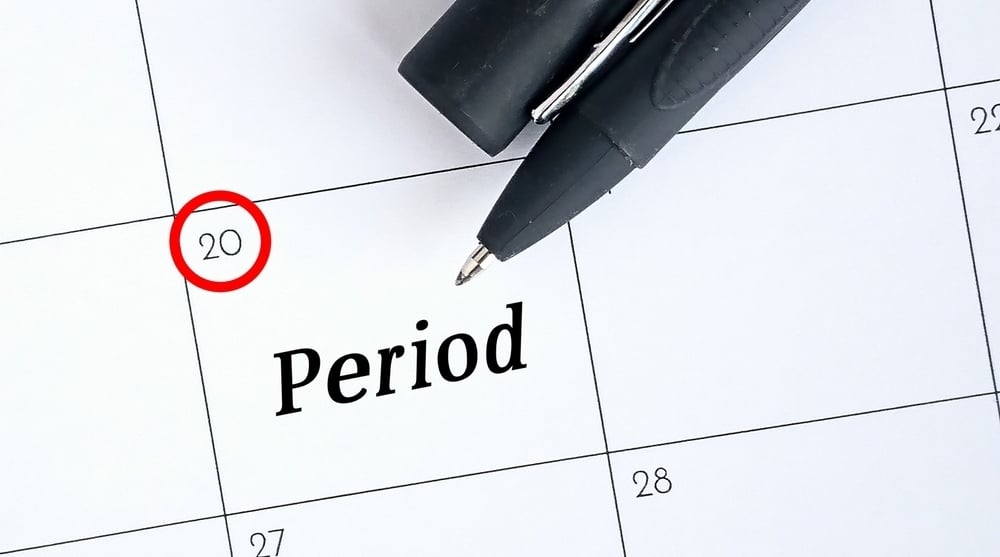What Are the End Signs of Menstrual Blood?
Hanafi Fiqh
Answered by Mawlana Ilyas Patel
Question
I want to ask if I can regard any creamy white discharge or thick white discharge as the end sign of my periods because I read somewhere that creamy shouldn’t be regarded as an end sign. I usually get thick, creamy white discharge after seven days of my period, and I can also see that after my urine.
Also, if I get pure and after 5-6 hours I get a yellowish discharge, then should I stop praying again? I’m so confused with so many opinions. I follow Hanafi fiqh, and I really fear that my prayer gets invalidated because of following the easy opinion.
Answer
In the Name of Allah, the Most Merciful and Compassionate.
I pray you are in good faith and health. Thank you for your question.
White discharge at the end of menses and yellow, turbid clear discharge are signs that menses have ended.
If discharge exits white and is seen within the possible days of menstruation, white or clear marks the end of a woman’s menstruation blood.
If yellow, turbid, white clear discharge is seen, it will signify that menses has ended within possible days. [Ackbarali, A Muslim Woman’s Guide to Menstruation Rulings]
Comparison of Different Vaginal Discharges
Normal Vaginal Discharge is completely white or clear, like cloudy lotion, egg whites, pasty, or tacky or clear. There is a difference of opinion. However, it is akin to sweat and pure and clean.
Discharge from vaginal infections is white, gray, or green. It is clumpy, fish stench, the vagina itches or burns, the vulva gets swollen, or the sex hurts. Wudu is required, and it’s filthy.
Arousal fluid is clear, the quality of it is wet, sticky, and slippery, only exits upon arousal, and wudu is required.
Orgasmic Fluid is yellow, and the quality is thin and watery at the time of orgasm; a ghusl is required, and it is filthy. [Ibid.]
Advice
It is a personal obligation (fard) for every adult woman to learn the basic rules of menstruation and to ask, as you’ve done, in the case of a complicated or unique situation). The following two books, A Muslim Woman’s Guide To Menstruation Rulings and Coming of Age, are very accessible books to learn these rulings. They are in English and have many practical examples, life experiences, and even illustrative charts to calculate menstruation.
I would like you to go through the valuable answers and links below. You will receive guidance and direction, in sha’ Allah.
Related Answers and Links:
How Can I Know the End of My Menstrual Period?
Menstruation: A Comprehensive Reader
Coming of Age by Hedaya Hartford
A Muslim Woman’s Guide To Menstruation Rulings [Detailed Edition -Recommended Book]
Fiqh of Menstruation Video Series. [Free]
Paid Courses:
Fiqh Of Menstruation For Women
Why not begin your search for knowledge by signing up for a course on SeekersGuidance?
I pray this helps with your question.
Wassalam,
[Mawlana] Ilyas Patel
Checked and Approved by Shaykh Faraz Rabbani
Mawlana Ilyas Patel is a traditionally trained scholar who has studied in the UK, India, Pakistan, Syria, Jordan, and Turkey. He started his early education in the UK. He went on to complete the hifz of the Quran in India, then enrolled in an Islamic seminary in the UK, where he studied the secular and ‘Aalimiyya sciences. He then traveled to Karachi, Pakistan. He has been an Imam in Rep of Ireland for several years. He has taught hifz of the Quran, Tajwid, Fiqh, and many other Islamic sciences to children and adults onsite and online extensively in the UK and Ireland. He taught at a local Islamic seminary for 12 years in the UK, where he was a librarian and a teacher of Islamic sciences. He currently resides in the UK with his wife. His interest is a love of books and gardening.
